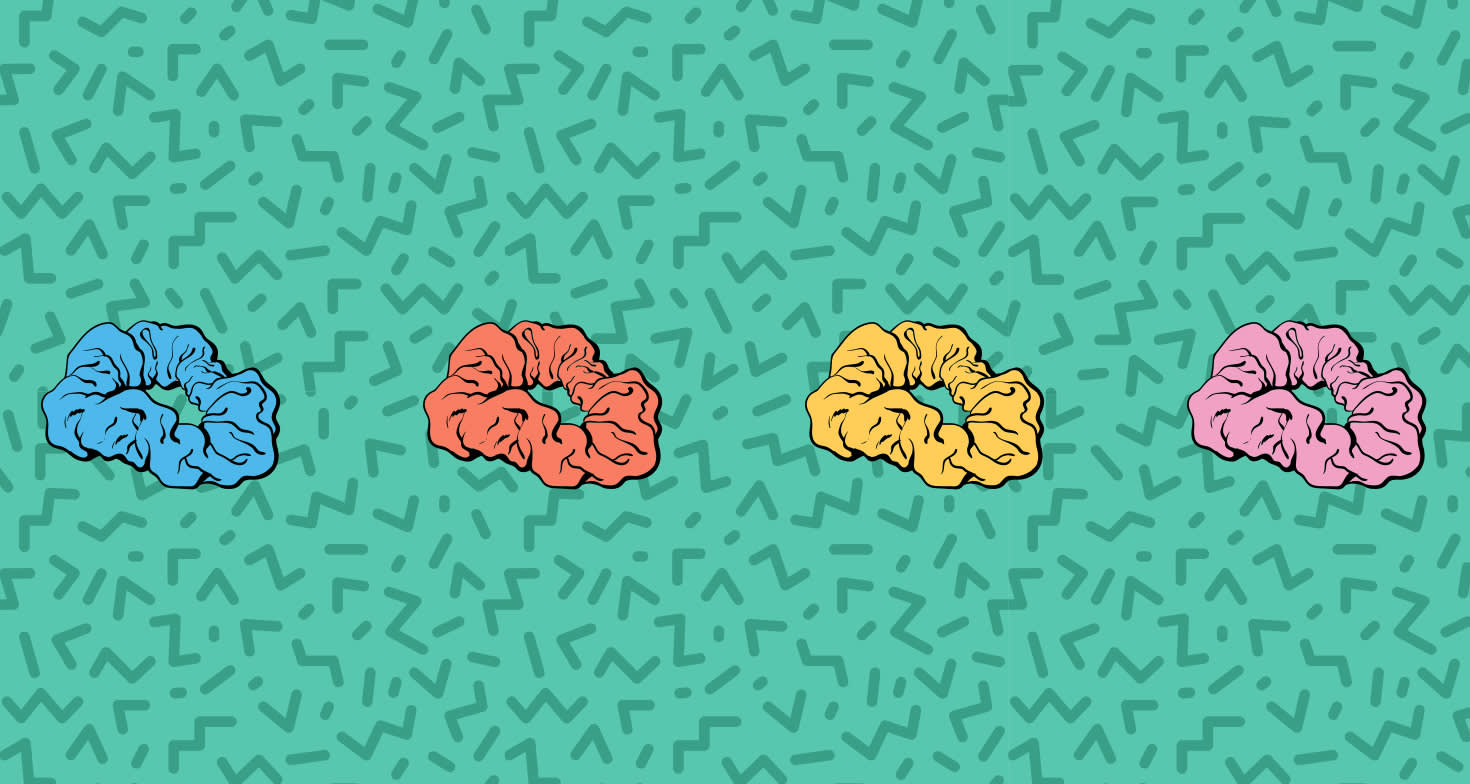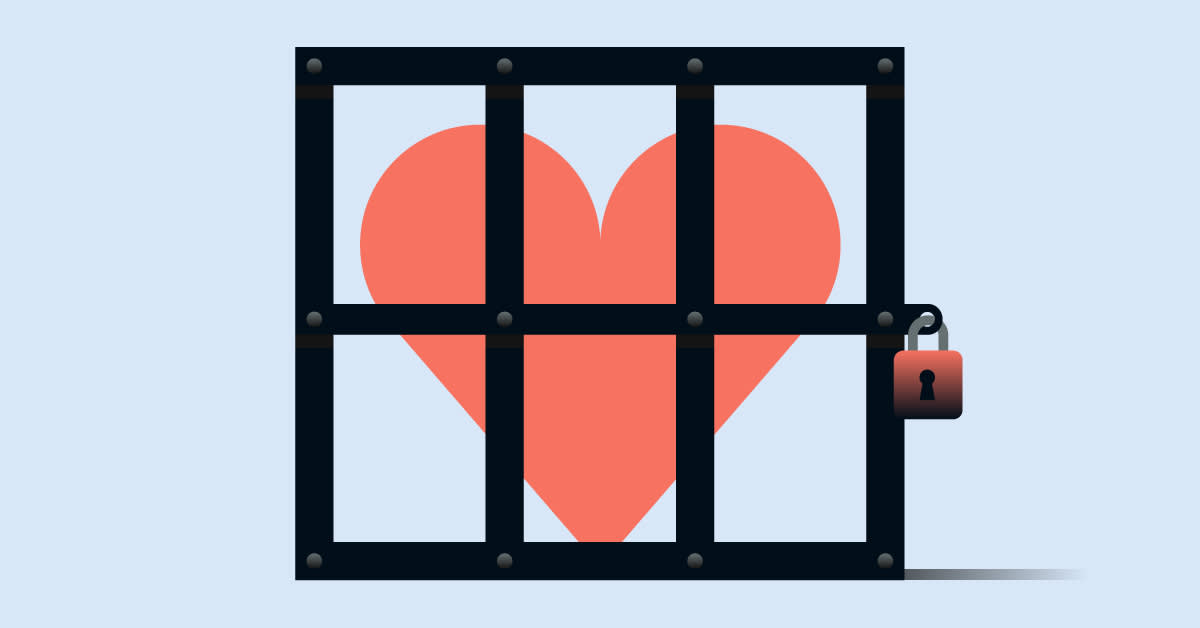Note: Listen as you follow along with this audio essay.
"There were those beautiful pastel spines, and they were all lined up in order on my sister's bookshelf. I was like, 'What are those? Why do they look so nice and when do I get to read them?'"--Kat L.
"One of the best things about The Baby-Sitters Club is that this was their idea."--Esther
"I love The Baby-Sitters Club books because I'm like, 'Wait, they're getting paid? I can get paid for this stuff?!'"--Omayra
I'm Audible Editor Rachel Smalter Hall, and just like these women, I have a lot of warm childhood memories about the iconic babysitting series by Ann M. Martin. Set in the fictional town of Stoneybrook, Connecticut, Kristy Thomas is 12 years old when she has the idea to start a local babysitting service with her three best friends. But it's also so much more than a business: the girls have each other's backs through thick and thin. To my 8-year-old self, reading about Kristy and her friends made me feel like I was a part of a secret sisterhood.
Three decades after the first Baby-Sitters Club book was published in 1986, Audible is bringing more than 130 Baby-Sitters Club books to audio for the first time ever, Netflix is producing a Baby-Sitters Club show, and think pieces about the series' significance keep popping up. When Ann M. Martin appeared at Book Con earlier this year, grown women cried when they got to meet the author of their favorite childhood series.
What does it all mean? Why did The Baby-Sitters Club make such a deep impression on a generation of American women? I needed to know, so I talked to some of my fellow Baby-Sitters Club fans who work with me at Audible to find out.
Over the next 20 minutes, you'll hear eight women from different backgrounds talk about why this series made such a lasting impact on their lives. And they're going to take us to some pretty unexpected places, from discussing what actually happened when they tried to emulate The Baby-sitters Club in their own towns, to talking about how babysitting felt like an American rite-of-passage that was only available to white kids in the suburbs. Through it all, I'll be here to guide you and help reveal the secret world of babysitting.
"When I was in the first grade and I was going to my religious education class after school, we were all asked to give a name to our guardian angel. I picked Kristy after Kristy from The Baby-Sitters Club to be the name of my guardian angel. It made perfect sense to me."
When I said that The Baby-Sitters Club made a deep impression on girls who grew up in the '80s and '90s, I meant it. That was the editor of Audible's YA newsletter, Katie O'Connor, remembering how she named her guardian angel after Kristy Thomas, the 12-year-old leader who forms The Baby-Sitters Club with her friends in Book #1, Kristy's Great Idea.
As I talked to other women at Audible, like Editor Kat Johnson, I learned that we all had our own little ways of paying homage to the BSC.
"I remember writing fanfiction based on The Baby-Sitters Club. Mostly it was just me writing about their meetings and their outfits."
Kat, who went on to work in fashion for more than a decade, told me that details like what the girls were wearing and their dynamic as friends were even more interesting to her than their actual babysitting experiences. It was an iconic grouping--like The Golden Girls or Sex in the City--that would be interesting in any situation because of who the characters were and how they related to each other. And she was comforted by how the stories always started with a meeting and followed the same, familiar structure.
Katie put her own spin on creating fanfiction about The Baby-Sitters Club:
"I used to play 'Baby-Sitters Club' with my cousins. We each would take on a character and then construct our own storyline. Not exactly replicate one of the books, but just come up with one on our own and then act it out. We were dedicated method actors."
Personally, I was really into Baby-Sitters Club swag. My elementary school had those Scholastic Book Fairs, and one year I just fell head over heels for this Baby-Sitters Club calendar. I can still smell the shrink wrap it came in. But I'm from a family of five kids and my dad held the purse strings with an iron fist, so I resigned myself to admiring it from afar. Then one day just before my birthday, I was in my parents' bedroom and I must have been snooping around because I found the calendar. There they all were: Kristy, Claudia, Mary Anne, Dawn, and Stacey. My mom was hiding it to give me for my birthday. I was so excited that I secretly told my brother, and he ended up telling on me and I got in trouble! But it was all worth it.
Some of us, like Audible's SVP of Content, Diana Dapito, took our Baby-Sitters Club fandom very seriously:
"I was so cool that I took a Red Cross babysitting course when I was in sixth grade with my best friend, so we were certified babysitters."
But Diana went on to reveal another very interesting detail about her babysitting certification:
"How often did you use that babysitting certification?"
"Um, not that often. There weren't as many opportunities as there were in Stoneybrook, Connecticut, for my other friends Kristy, Claudia, and the whole gang."
In the many conversations I've had about babysitting, one thing has come up over and over: most of us who grew up as fans of The Baby-Sitters Club actually did very little babysitting ourselves. At most, we had an occasional babysitting gig or spent most of our "free" time looking after younger siblings and cousins for no pay. Our fantasies of babysitting were sort of better than the actual babysitting.
This revelation was totally eye-opening to me. And, by all accounts, our collective perceptions about babysitting had been established long before the first Baby-Sitters Club book came on the scene in 1986. I asked Audible Editor Abby West where she thought this idealized version of babysitting came from:
"Movies and TV. Name any evening programming where the father and mother were going out on a date, to a party, or to anything, and they called a babysitter."
To Abby, who started looking after her 8-year-old and infant sisters when she was just 12, the image of babysitting in pop-culture was especially fascinating because it was so different from anything she saw in her own New York neighborhood growing up:
"Babysitting was a very foreign concept, at least the way it was portrayed in pop culture. I'm West Indian. I came to New York when I was 4. I grew up in the Bronx in various neighborhoods that were very "ethnic," with multiple generations living together. When someone needed their kid watched, another kid watched them, or a grandparent, abuela, cousin...It wasn't this idealized thing that seemed to exist in movies and in books where you called a kid you barely knew. You paid them?! Because that was a fantastic concept to me. People got paid? For watching your niece, cousin, nephew, little sibling, whatever? So it felt, and I would have to say, it felt like a white people thing."
Getting paid to watch someone else's kids on mom and dad's date night felt like an American rite-of-passage to Abby, and one that she would never be invited to participate in as a West Indian American growing up in the Bronx. It's something that just wasn't was done in her community.
"It added to a certain sense of otherness. That if this is an American rite of passage and we don't do that, we're not as American in a certain way."
When Abby shared her take on babysitting with me, it made me see the pop-culture phenomenon in a new light. Its sheen of wholesomeness wore off a little; now it felt a little less innocent. And this idea that some kids felt excluded by babysitting and the lifestyle it symbolized came up more than once. Here's what Omayra Molina, one of Audible's Customer Service Specialists, told me when I asked her if she could remember when she first became aware of babysitting:
"When I was a little girl, my mom used to watch a lot of Shirley Temple and Annie. So that's where that concept came from, where you get paid for taking care of people's kids. And they looked similar. Even though they may have come from different trajectories, they still seemed to have, like, the fair skin and the hair."
When Audible Editor Lavina Khemchandani told me about her childhood growing up in Atlantic City, she said it was very different from what she imagined a typical American childhood in the suburbs to be:
"I'm a second-generation American. My family is from India. My mom's sister's family was on one floor of the apartment building I was in. My family was on another, and my mom's brother's family was on another. So someone was always available to take care of the kids."
Although Lavina lived in an older, seasonal resort town that didn't have many permanent residents, she went to school in a nearby suburb that had a lot more young families, kids, and babysitters. But spending so much time in what she thought of as a typical American community only added to her own sense of otherness:
"I was very much outside of the fishbowl looking in on this perfect little suburbia. I thought it was exactly like what I saw on TV, on Boy Meets World and whatever other sitcoms we were watching then. Like, everyone just had their families and their teenage babysitters and their movie nights on Fridays, and everything was perfect. And I thought my life sucked.
But here's where things get interesting. While she felt alienated by some popular American books and TV shows, Lavina was a huge fan of The Baby-Sitters Club. There was something about the series that opened doors for her instead of making her feel shut out like so many other depictions of teen life in the suburbs had. The babysitters had something different, something special.
"They were pretty flawed. They messed up sometimes, and the other friends had to come in and be like, 'Okay, not cool. Let's fix this.' It was kind of refreshing to see this."
As a female-driven series about sisterhood, the BSC was indeed refreshing. One after one, most of the women I talked to mentioned a variation on this theme: that one of the reasons they came to love The Baby-Sitters Club is because the girls weren't above making mistakes. They'd mess up, then their friends would gently call them out but also help them. They were a support system for each other and worked through their problems as a team. And it challenged the ideal of perfection in the suburbs by offering real, flawed, relatable characters.
With everything else that was going on culturally in the late '80s, we were ready for a series like The Baby-Sitters Club. Audible Studios Director Kat Lambrix nails why it felt so relevant:
"The books didn't shy away from changing family roles and changing social roles, and it really normalized all kinds of things. Like the book where Claudia's grandmother died--a lot of us were at the age when we were reading them that our grandparents were passing away. Or when divorce happened, it wasn't approached as, like, an afterschool special, it was just part of life. And these were the lives as young women in the '80s that we were really leading. This was our everyday occurrence.
"When we read these characters that we loved and identified with and were going through the same thing, it made us feel like, 'Okay, I'm not alone, I'm not the only one. This isn't a weird thing that's happening. Like, maybe I'm not thrilled that my parents are splitting up, but look, it's happening to one of my favorite characters, too. And she has all this support, and she's okay in the end, so I'm going to be okay too.'"
Omayra also related to the characters on a deep level. When Stacey opens up about having diabetes in Book #3, The Truth About Stacey, it struck a personal chord with her because her mom had diabetes, too. She remembers that Claudia looked up the disease to figure out how she could help her friend. This detail made a huge impression on Omayra because, in her family, she was the person who did the research when her mom was first diagnosed.
The series had a special way of tapping into issues that were affecting real teens' lives, and the diabetes story is just one of many that made fans of The Baby-Sitters Club feel less alone. I asked Omayra if she felt a special connection to any of the other babysitters, and she did:
"Mary Anne. I liked her story because I remember her house being on fire. We had a couple of house fires--we had one when I was about 12, and then we had another one when I was a senior in high school. I related to Mary Anne and what she went through in that phase. You really feel overwhelmed, because you lose everything."
The Baby-Sitters Club was there to offer Omayra a roadmap and a sense of comfort during some very scary moments in her life. I put the same question to Lavina:
"Did you have a particular babysitter that you identified with?"
"Oh, it was definitely Claudia. I think she had a similar sort of sheltered background: high expectations as far as grades, school, and what you're going to do with your future. And a need to express her envy creatively through her painting and artwork."
It's worth mentioning that Claudia came up over and over and over again. Everyone had something to say about her, although we each had our own completely different take. I've always thought of Claudia as the cool one who loves junk food and fashion. Kat J. remembers her as an artist first, with fashion as just one of her many modes of expression. And Lavina picked up on what it was like for Claudia to grow up in an immigrant family. Part of the genius of Ann M. Martin is that she gave every character so many different dimensions.
Then there's the fascinating phenomenon of women who identify with Kristy but secretly wish they were more like Claudia. When we were all teens and tweens reading The Baby-Sitters Club books for the first time, being an organized planner like Kristy might not have seemed as cool as having two piercings in your left ear like Claudia. Claudia has this innate, enviable coolness. But Kristy has her own strengths as a character, too, and she taught young women who identified with her how to love these aspects of themselves. Kat L. brings a great perspective to this:
"I think reading Kristy was a great chance for me to recognize my strengths as a young woman, because that's what was great about The Baby-Sitters Club. Everybody brought a little bit of their personality. And I really started to see it as, 'Well, what can I contribute?', and it made it okay to be who I was. Kristy was just as great of a babysitter, character, and friend as everybody else in the books was."
What Kristy brings to the table are her skills as a no-nonsense problem solver. And, at the end of the day, the reason babysitting was so alluring is because it gave us the chance to tackle grown-up problems for the first time. Halfway between children and adults, we were thirsty for our first little taste of adult freedom and responsibility. It was intoxicating. Remember Diana, who took the Red Cross babysitting course? She describes this crossroads so perfectly:
"The sense that you're in charge and there are no other adults to help you solve your problems or make decisions for you, and you can do whatever you want--it's both terrifying and appealing."
Not to freak you out, but we all made more than a few mistakes while babysitting our young charges. All of the women I talked to had their own story that started with, "I probably shouldn't admit this in public, but..." Here they are in their own words, admitting what really happened on those babysitting jobs:
"I was playing with my little brother when he pushed me and I fell. My two front teeth came through my bottom lip and I had to go get stitches. It was hilarious. I laugh at it now, but when it happened, my older brother got in really bad trouble. And my mom wasn't there, so he rode me on the bike to the hospital, and then my little brother and my older sister were home watching the rest of the babies."--Omayra
"She would ask me what dirty words meant. Sometimes they would just be curse words, and sometimes they would be, like, anatomical words. And I never really knew how to answer. Sometimes I'd be like, "Well, I, I don't really know. I'm not sure. Do you want to go play barbies and eat ice cream and throw glitter all over the porch?"--Kat L.
"My very favorite part of babysitting was when the children went to sleep, and then I could watch whatever I wanted on TV and help myself to snacks. But then I was also a little bit paranoid about not taking too much, and what would they notice that I had?"--Diana
"One of the really fun things to do was to go to the top of this other building and throw things down a shaft. I think someone called the cops, and I was up there literally holding this child. It's funny looking back, because--as a mother now--it's horrifying. I can't even imagine someone doing that with my children when they were small. But I'm amazed by the fact that I had shock and fear over what was going to happen with the police, and whether I was going to get in trouble with them. And with my mother, because oh my God, if my mother's going to find out, I'm dead. But I had no fear about taking the kids and standing on the rooftop by an abandoned elevator shaft. That didn't seem crazy at all!"--Abby
We didn't always get it right. But at least we were given the space to try.
Then there were those moments where we didn't do anything wrong, but we were still kind of thrust into these unfamiliar situations that made us grow up just a little bit quicker. Kat J. told me this story:
"I had one family I babysat for where the mom, as she was walking out the door, was like, 'Oh, by the way, one of the girls has a prosthetic leg and she'll take it off before bed, she knows what to do.' And then she left, and I was just so freaked out. I felt so curious, but I was also a little scared, and it just seemed like a really heavy thing to lay on someone as you're walking out the door. But then, of course, bedtime came and she took off her leg and everything was completely fine."
Esther Bochner, Audible's Director of Content Partnerships, had to do some growing up fast, too. When she was just 13 or 14, she would sometimes babysit overnight and have to put the kids on the bus for school in the morning. It was a big responsibility for someone who was herself just a kid. One morning, they were still waiting for the bus about twenty minutes past the usual pickup time. She didn't know if they had already missed the bus, or if maybe it wasn't even going to come at all.
"I think that's where my inner Kristy really came out. It was like, 'Okay, what do I need to do? What is the end result here? What are the scenarios that I can employ? What is beyond my control in this situation, and at what point do I need to call someone else?'"
Channeling Kristy, Esther decided to check the stop down the street and saw that kids were still waiting there, too. So she brought all the kids back to her stop and the bus eventually came. Crisis averted.
There's one more thing we need to talk about when we talk about why we loved The Baby-Sitters Club.
"I love The Baby-Sitters Club books because I'm like, 'Wait, they're getting paid? I can get paid for this stuff?!' It turned on a spirit of entrepreneurship."
That was Omayra remembering why she was drawn to the books when she first saw them on the shelves of her local Boys and Girls Club in Newark, New Jersey. If there was one thing we reached a consensus on when I talked to my fellow BSC fans, it's that we loved how babysitting--and The Baby-Sitters Club--offered us a model for financial independence. Here were these young women, just 12 years old, taking the initiative to start their own business. They had their own money! We hadn't seen that before. No matter what city or background we came from, the appeal was universal. And we wanted a piece of it for ourselves.
Katie took this entrepreneurial spirit to heart as a tween:
"For me, the Baby-Sitters Club really inspired more a desire for the side hustle--to create my own different businesses and figure out ways that I could make my own money. One summer I decided to find whatever random stuff I could find in my house that I felt comfortable parting with and sell it door to door. And so I grabbed some opened sunscreen, a peach, my water gun, like half a dozen items at least."
She did end up selling most of the items to reluctant neighbors...before her mom found out and made her return the money--without getting the items back. Katie was especially crushed about losing the water gun.
Today, I have to wonder if the popularity of the #GIRLBOSS books and all the manuals that empower women to be successful business owners is because those of us who grew up with The Baby-Sitters Club are finally old enough to be entrepreneurs ourselves. It certainly sparked something in Esther that she carries with her to this day:
"Starting from when I was 12, because of my experience babysitting, I bought all my own clothes. When I went to the movies, I paid for my ticket. You earned this for yourself. And that really took me into college and into my adult life."
It's something that Esther hopes to pass on to her own daughter, who's 6. They've already read some of The Baby-Sitters Club books together, and they're looking forward to listening to the rest of the series on Audible.
"Watching her experience these stories for the first time has been really special and powerful for me, because they're the same stories that I loved growing up, and they resonate with her in the same way."
And which babysitter would her 6-year-old daughter be?
"She is totally a Kristy, and so am I. It was so clear from birth."
You can find the Baby-Sitters Club series on Audible at Audible.com/babysittersclub
This was produced and written by me, Rachel Smalter Hall. Special thanks to Jeff Dudzick, Courtney Reimer, and the women whose voices you've been listening to: Esther Bochner, Diana Dapito, Kat Johnson, Lavina Khemchandani, Kat Lambrix, Omayra Molina, Katie O'Connor and Abby West. We were recorded by Jared Pinckney and Tim Kim. Post-production by Pat Hynes. Production copyright 2019 by Audible, Inc.




